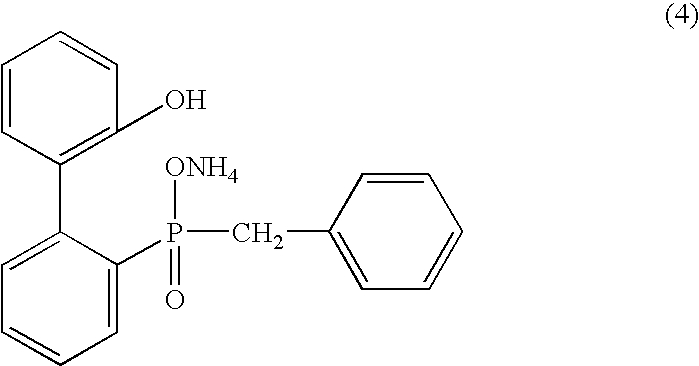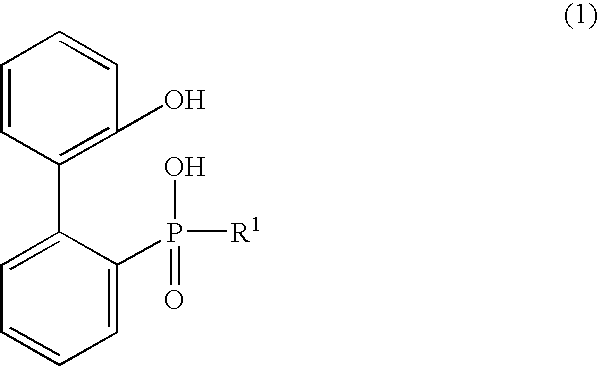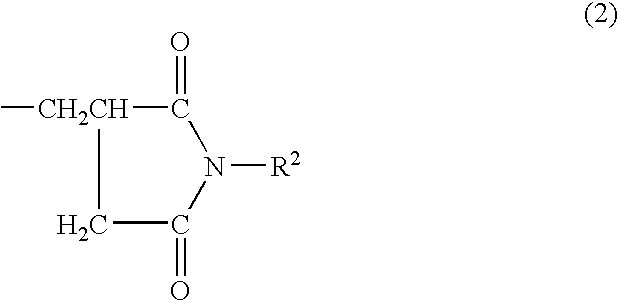Flame retardant treating agents, flame retardant treating process and flame retardant treated articles
a technology treating agent, which is applied in the direction of detergent compounding agent, group 5/15 element organic compound, organic chemistry, etc., to achieve the effect of preventing heat deformation of fibers, promoting the fixing of flame retardant treatment agents, and reducing strength
- Summary
- Abstract
- Description
- Claims
- Application Information
AI Technical Summary
Benefits of technology
Problems solved by technology
Method used
Image
Examples
example 1
[0095]To 40 g of the phosphorus-based compound represented by formula (3) above as component A there was added as a dispersing agent 5 g of an ethylene oxide 10 molar addition product of tristyrenated phenol, and then 53 g of water was added thereto while stirring. Next, 2 g of a 10 wt % aqueous solution of carboxymethyl cellulose was added as a dispersion stabilizer to obtain a flame retardant treating agent as a white dispersion.
example 2
[0096]A flame retardant treating agent was obtained as a white dispersion in the same manner as Example 1, except that the phosphorus-based compound represented by formula (4) was used as component A instead of the phosphorus-based compound represented by formula (3).
example 3
[0097]A flame retardant treating agent was obtained as a white dispersion in the same manner as Example 1, except that the phosphorus-based compound represented by formula (5) was used as component A instead of the phosphorus-based compound represented by formula (3).
PUM
| Property | Measurement | Unit |
|---|---|---|
| Temperature | aaaaa | aaaaa |
| Temperature | aaaaa | aaaaa |
| Temperature | aaaaa | aaaaa |
Abstract
Description
Claims
Application Information
 Login to View More
Login to View More - R&D
- Intellectual Property
- Life Sciences
- Materials
- Tech Scout
- Unparalleled Data Quality
- Higher Quality Content
- 60% Fewer Hallucinations
Browse by: Latest US Patents, China's latest patents, Technical Efficacy Thesaurus, Application Domain, Technology Topic, Popular Technical Reports.
© 2025 PatSnap. All rights reserved.Legal|Privacy policy|Modern Slavery Act Transparency Statement|Sitemap|About US| Contact US: help@patsnap.com



